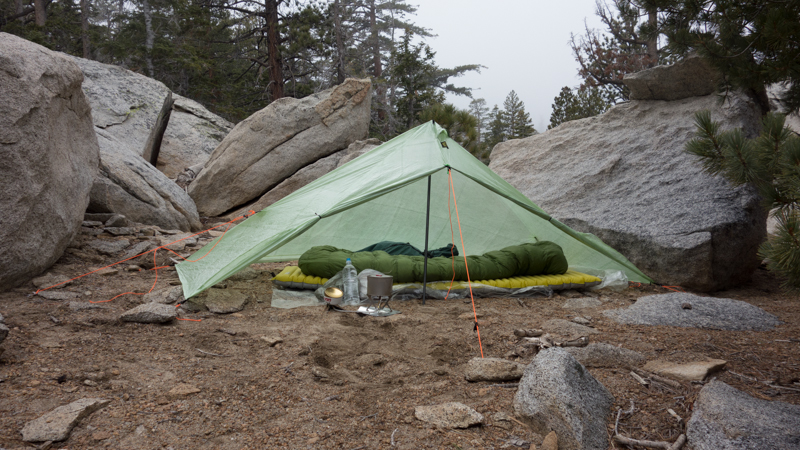
Cuben Fiber (now called DCF) is a non-woven laminate fabric developed by the Cuben Tech Corporation in the early 90’s for the sails on racing yachts. In 1992 America3 won the America’s Cup Race using sails of Cuben Fiber.
In the mid to late 2000’s a few cottage industry backpacking gear companies started selling shelters and backpacks made from Cuben Fiber. The fabric has high tensile strength and is extremely light. But it has some important disadvantages. Most of which is my concern that it really isn’t very durable and has a short lifespan.
So the question becomes, is DCF worth the cost?
I’m not throwing away my DCF gear, but when items wear out, which they will, I will be replacing them with something else.
What’s in a Name?
Back in 2015, Cuben Tech sold the company to the Dutch company DSM, well know for its Bullet-proof Dyneema fabric. In 2010 I bought a McHale LBP 36 Backpack that is made from this full Dyneema material.
After the purchase of Cuben Tech, DSM changed the name of the fabric from Cuben Fiber to Dyneema Composite Fabric (mostly now known as DCF), which really confused the public.
I wrote about it in this post, Cuben Fiber, Dyneema, and Economics.
Pros and Cons
Today DCF is a popular fabric for backpacks, tents and tarps, and other backpacking gear. It is lightweight and strong. But it has disadvantages.
- High cost
- Poor abrasion resistance (not a good feature in a backpack)
- It is difficult to work with (meaning few companies know how to build quality products made from Cuben).
- It doesn’t compress as well for packing as other materials — packing volume is important to backpackers.
Nowadays DCF is often laminated to more robust materials that make it more suitable for backpacks. DCF comes in many weights per ounce, meaning you need to know what you are buying since each weight has different characteristics.
As a generalization, DCF shelters and backpacks often cost 2 or 3 times more than products made from nylon or similar materials at a weight savings of maybe 50% in a simple tarp shelter and less in backpacks. Equipment made from DCF requires more careful use than other materials.
My History with DCF
Keep in mind that I was well aware of the limitations of DCF before I made any purchases. I know how to take care of fragile gear. DCF does have many advantages, but longevity is not one of them.
Enlightened Equipment
When this large company was starting out as a one-man part-time home-based business, I bought a Ephinay Quilt (2″ of loft rate at around 32° F, 10.90 ounces) made from DCF in 2010. The idea of making a quilt out of this material was revolutionary thinking at the time. It wasn’t a popular idea.
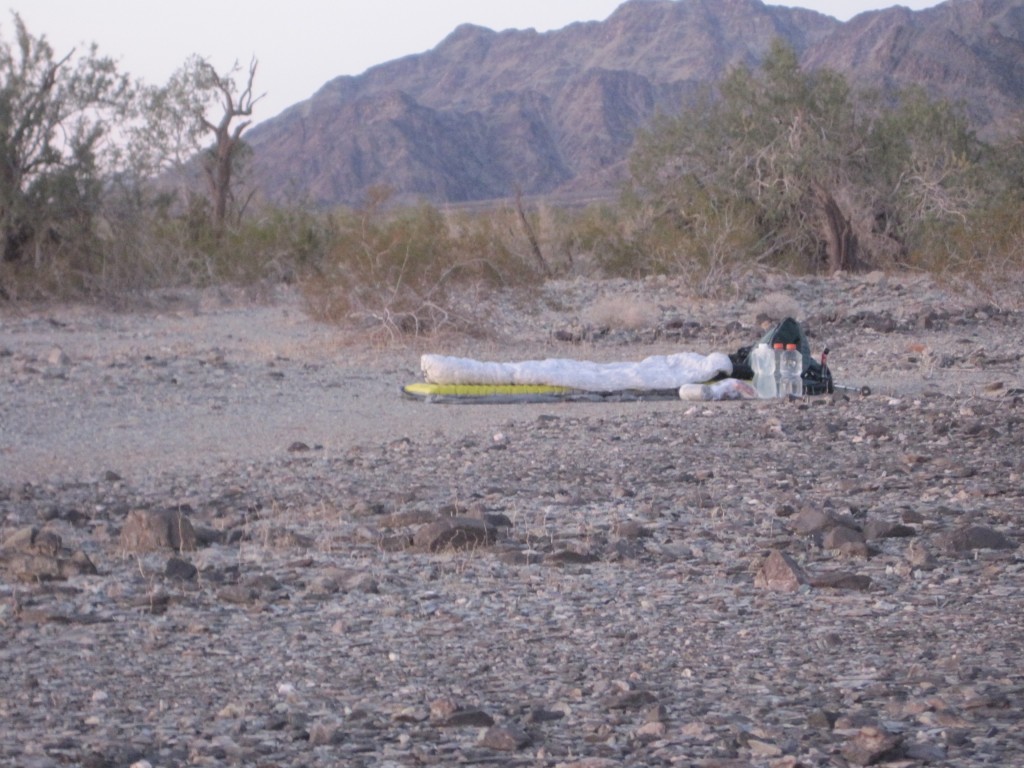
All-in-all, I really liked this quilt and used it for a few years. It was retired when the DCF material started to fall apart. My current sleeping bag and two quilts are about just as old and have many, many years of future life. In fact, I’ll be dead before any of them wear out.
Puncture resistance of DCF is almost non-existent.
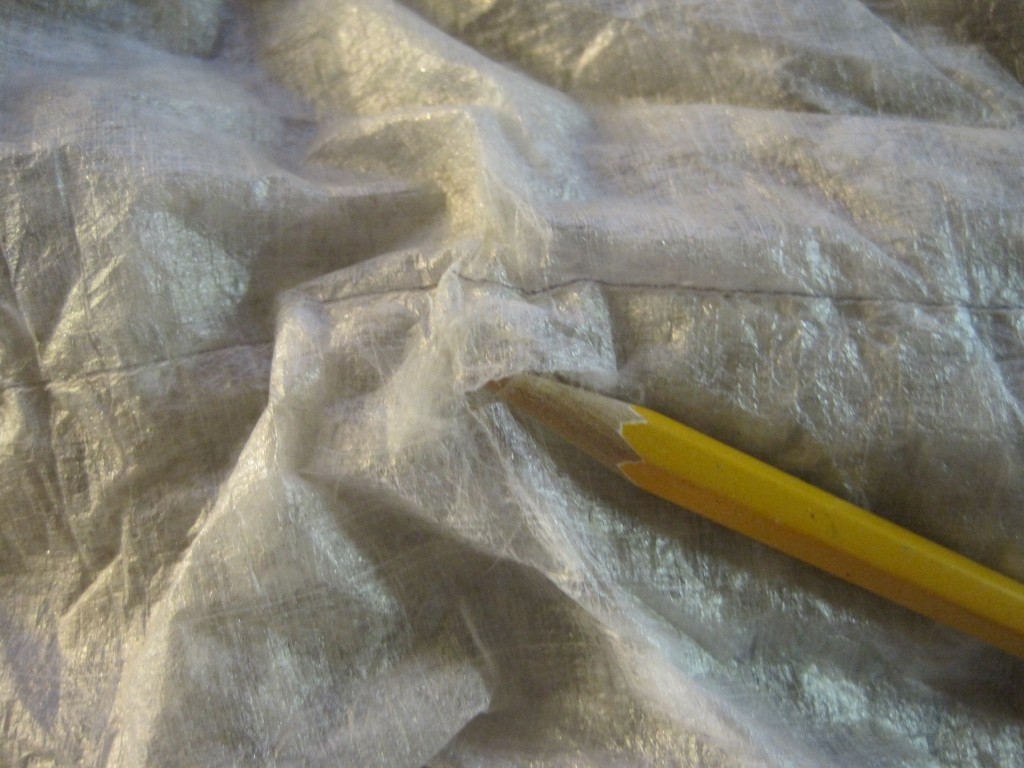
This tear (above) in the material was made with a fingernail when I was putting the quilt into a stuff sack. It was easily repaired with DCF tape. In the picture below the material is starting to de-laminate around this sewn-in cord.
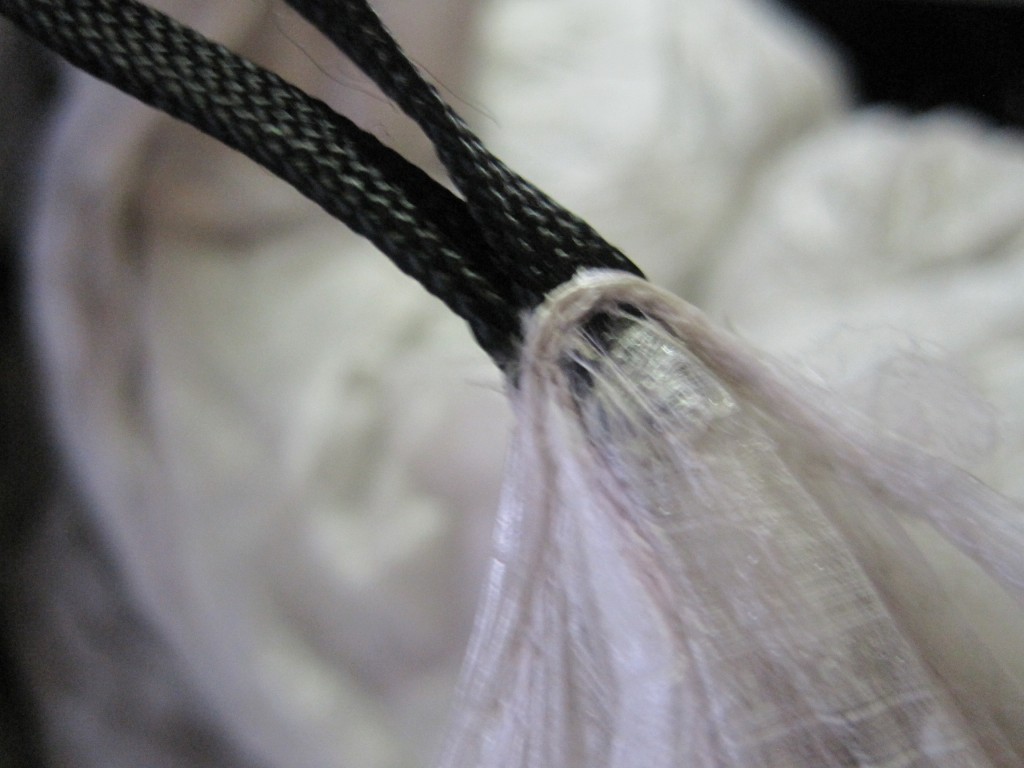
Zpacks
Arguably the largest backpacking company that makes DCF gear. In 2011 I bought several items from them. I used all these items on a trip in Nov 2011.
- Zero Backpack (4.48 ounces)
- Hexamid solo shelter (3.63 ounces)
- Poncho/Groundsheet (4.09 ounces)
Zero Backpack

To be honest, this pack lasted much longer than I anticipated. It really is just a large stuff sack with straps. When it finally died, it started de-laminating in several spots and the sewn areas started to tear.
Zpacks and other companies that make these ultralight DCF packs will tell you the life expectancy is on long thru-hike of 5-6 months.

Hexamid Shelter
Okay this thing is light and the material is thin.
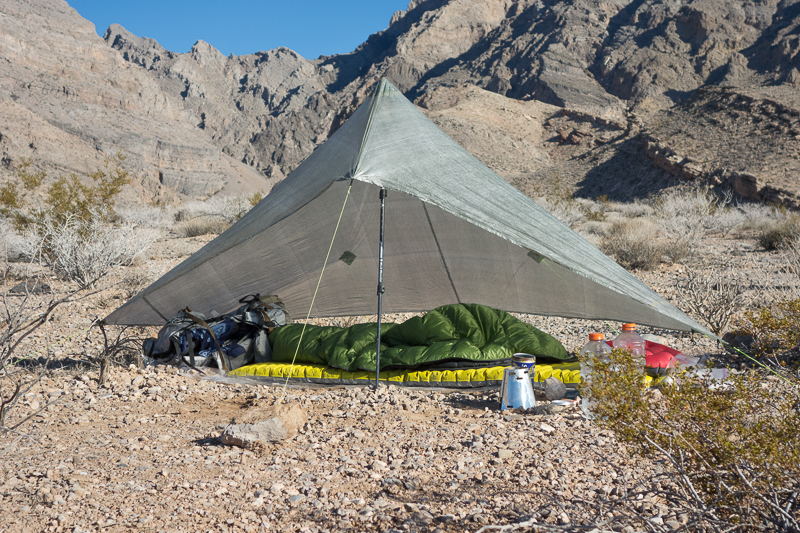
When I took this on a trip I just folded it up and put it in my backpack. I have read several reports of people packing DCF shelters into stuff sacks, to try and reduce the packing volume. They reported that the shelter developed de-lamination in just a few months from the abrasion of pushing it into a sack every morning on trips.
Mine had no problems as I never did this. The other consideration is I only use it when I expected rain. On this trip (see above image) I only used the shelter one night. The rest of the time I slept like this:

I gave it to my son after I bought a larger shelter in 2015 for more coverage. The Hexamid covers 35 square feet. The replacement covered 44 square feet.
Zpacks Poncho/Groundsheet
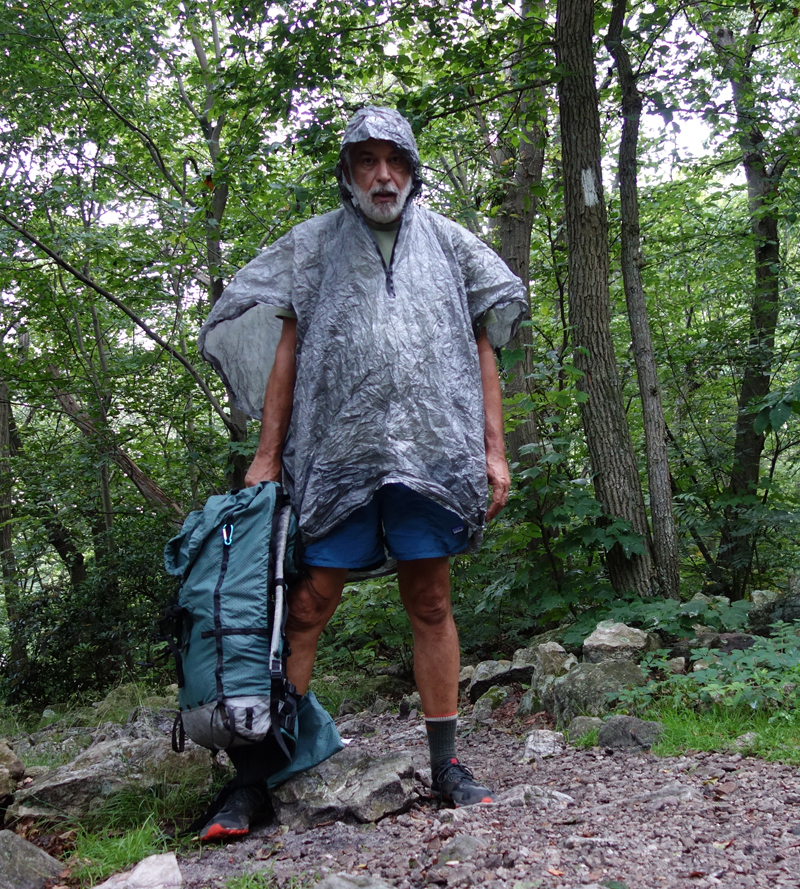
This is designed to clip to the Hexamid Solo Shelter to become a bathtub groundsheet. I only did this twice to see how it would work, but the idea of DCF as a groundsheet/poncho combination is flawed. As a groundsheet it will develop pinholes and other damage. As a poncho these pinholes and other damage will leak rain.
DCF is not puncture resistant. However the surface is slick and worn as a poncho it does catch on shrubs like other materials. I am still using this. But I don’t hike often in rain. It is one of my favorite gear items.
Six Moon Designs
In 2015 I bought a Six Moon Designs Deschutes CF solo shelter made from DCF (7.16 ounces). Initial review can be found here. For the past nine years it has been my go-to shelter. I bought it because it provided more coverage than the Zpacks Hexamid.
After my last trip I found an area that is starting to delaminate and repaired it with DCF tape. This is the second repair to the shelter. These repairs are not an indication of poor workmanship from Six Moon Designs but a limitation of the material.
Six Moon Designs is no longer selling this in DCF, but do offer it in SilNyon. When the Deschutes finally dies, I will probably buy the SilNyon version (13 ounces almost double what my DCF version weighs).
Stuff Sacks
I don’t use stuff sacks much, but on most trips I often bring a couple of differing sizes. They all wear out quickly from abrasion or develop holes. Below is a dry bag that fell apart after a few years. I probably could have been constructed better using DCF tape along the sewn seam, but heck it’s just a stuff sack — of course a cheap nylon stuff sack would have last several times longer.
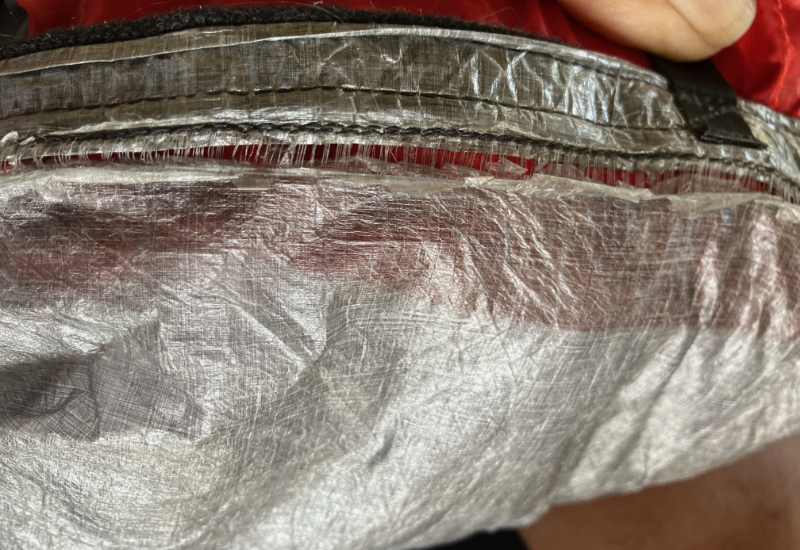
These (below) would be a better option. I already bought some!
This website may be compensated for linking to other sites for sales of products. As an Amazon Associate I earn a small fee from qualifying purchases at no additional cost to the purchaser.


